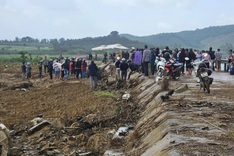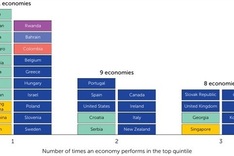
New FDI disbursement may slow if the tariff outlook after August 1 is not as expected, which can affect the foreign exchange rate in the short term. Photo cafef.vn
The reciprocal tariff rate announced by the US for Vietnam and other countries on August 1 will be a major factor affecting the USD/VND exchange rate in the short term, but the exchange rate will likely cool down by the end of this year, experts forecast.
In a recent macro-economic outlook report for the second half of 2025, experts from the KB Securities Company (KBSV) said that in the short term, the exchange rate may remain tense at some points in the third quarter due to three reasons.
First, the increase in exports during the tariff deferral period while the PMI index has remained below 50 in the last three months will put pressure on growth in the third quarter, due to the lack of orders.
The third quarter is also the season during which FDI enterprises typically transfer profits back to their countries.
Finally, new FDI disbursement may slow if the tariff outlook after August 1 is not as expected.
However, KBSV’s experts also said that the USD/VND exchange rate is expected to cool down by year-end thanks to the recovery of export activities during the peak season, remittances to the country and the decline of the US dollar's strength, in the context of the US’s imposition of President Donald Trump's Big Beautiful Bill policy and the expectation of US Fed interest rate cuts later this year.
KBSV forecasts that the USD/VND exchange rate for the entirety of 2025 will increase within the allowable range of about 4 per cent compared to 2024.
Economist Nguyen Xuan Thanh from the Fulbright School of Public Policy and Management agreed, adding that the Fed is likely to cut interest rates at least twice in the second half of the year. Starting with its upcoming meeting in September, investors are betting that the Fed will cut interest rates twice or possibly three times by the end of the year.
Thanh said he believes that there will be an interest rate cut in the fourth quarter of 2025 because the US economy is likely to show signs of slowing. He also predicted that the US will impose higher tariffs than before, but the level will not be too high.
According to Thanh, in the last six months of this year, the possibility of downward pressure on the Vietnamese Dong will significantly decrease if the Fed lowers its interest rates but Vietnam does not. There is even a scenario in which the đồng will not depreciate at all against the dollar, Thanh said.
He predicted that the State Bank of Vietnam (SBV)’s monetary policy during this period will be to maintain the current interest rate level. If there is pressure to increase interest rates, especially in the interbank market, the central bank will likely increase liquidity to avoid an interest rate hike.
"If there is an opportunity to reduce interest rates, it is very likely that the SBV will not lower interest rates but instead support the Dong to avoid depreciation," Thanh said.




















